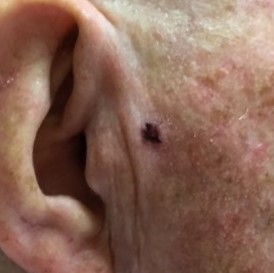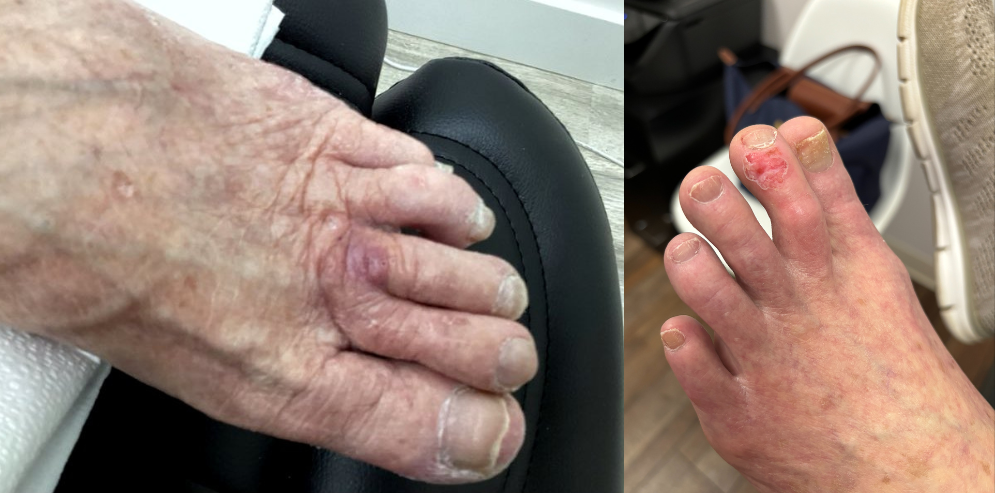
Having a large number of moles is a risk factor for developing skin cancer. Unfortunately, it’s not always easy discerning a common mole from skin cancer. Noticing a bump on your face that isn’t acne or an oddly shaped mark on your skin that seemed to appear out of nowhere might leave you feeling concerned. The good news is that noticing changes in your skin means you’re paying attention — and if something is amiss, you have a much better chance of catching it early.
What are Moles?
Moles are made up of melanocytes, which are skin cells that add pigment to your skin. Melanocytes transfer melanin to other skin cells to help protect against ultraviolet radiation. Sometimes, melanocytes grow as a cluster instead of traveling to other skin cells. Normal moles aren’t cancerous, but they can turn cancerous if their DNA is damaged by exposure to UV rays. Cancerous melanocytes are called melanoma. As the cancer cells divide, the cluster changes and looks like a new or evolving mole.
Mole vs. Cancer: What’s the Difference?
Skin cancer can start seemingly as a new mole or freckle, or it can develop within an existing mole. How do you differentiate between a harmless mole and skin cancer bumps? Use the ABCDEs of skin cancer: Asymmetry, Border, Color, Diameter, and Evolution. Here’s what you should keep in mind about moles and skin cancer areas, and how they grow and develop over time:
- Skin cancer areas, such as melanoma spots, aren’t uniform in shape. Their shapes and borders are irregular. Common moles are usually symmetrical with well-defined borders that are smooth.
- Melanoma can be red, blue, purple, black, or brown. Common skin cancers, such as basal cell and squamous cell, present as small, pearly skin cancer lumps or as flat or raised patches that can be red and scaly.
- Malignant moles are typically larger than benign, common moles. They also grow and change over time. Basal cell and squamous cell skin cancers grow very slowly, but melanoma can grow and spread quickly. If you’ve had a larger mole for a long period of time, it may not be a cause for concern, as long as it doesn’t grow or change.
Explore Your Skin Cancer Treatment Options with GentleCure
Routine skin cancer screenings and self-exams are important to keep tabs on your current moles, and new ones that might appear in the future. GentleCure™ can connect you with dermatology locations in your area that offer safe, non-surgical treatment for common skin cancers. Explore our blog for more information on skin cancer statistics and prevention, or contact us to learn more about GentleCure.








